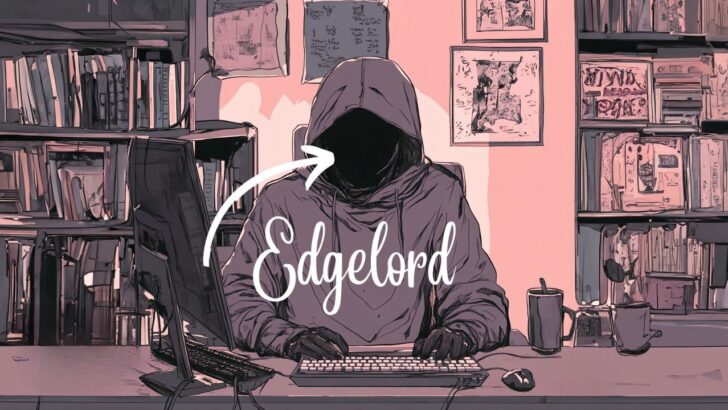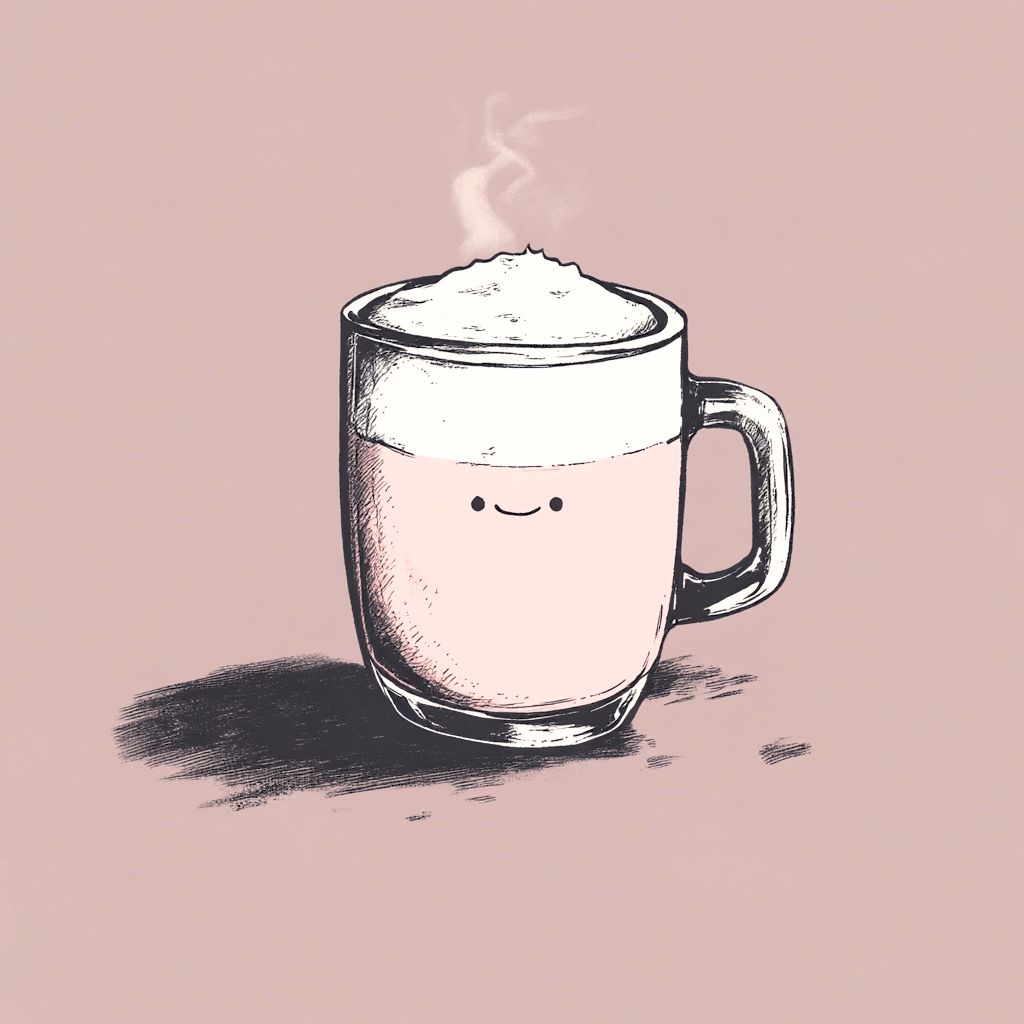The Oxford English Dictionary (OED) is one of the most popular dictionaries in the world. Every couple of months, new words enter the OED dictionary. And the great thing about that is that you can check these new word entries directly on the OED website.
In its latest update in June 2024, the OED has added a lot of fun words to its dictionary. From terms of technological advancements to those that capture significant sociocultural shifts, this update offers something for everyone.
Let’s have a look at some of the most intriguing additions!
1. Babyccino (n.)
Definition: A children’s hot milk drink frothed up with pressurized steam to resemble a cappuccino.
Ah, the babyccino. If there was ever a word that captured the spirit of modern parenting, this is it. Picture this: you’re at your favorite trendy café, sipping on your double-shot, oat milk, vanilla latte, while your little one tugs at your sleeve, yearning for a taste of the coffee culture. Enter the babyccino, a tiny cup of frothy milk that lets kids join the grown-up world of café lounging without the caffeine jitters.
Imagine the scene—tiny toddlers with their pinkies up, sipping their foamy concoctions like miniature aristocrats. It’s adorable, hilarious, and the perfect way for kids to feel included in the sophisticated, caffeine-fueled world of adults. Plus, it gives parents a few extra moments of peace while their offspring are distracted by the novelty of their very own “coffee.”
The babyccino is more than just a drink; it’s a rite of passage for the modern toddler, a tiny ticket to the realm of coolness and social media-worthy moments. And let’s be honest; it’s hard not to laugh when you see a three-year-old confidently ordering their babyccino as if they’ve been frequenting coffee shops for years. So next time you’re out for your caffeine fix, don’t forget to get your little one a babyccino—it’s the first step in training the next generation of café connoisseurs!
2. Artificial General Intelligence (AGI) (n.)
Definition: A form of artificial intelligence in which a machine or program can hypothetically simulate behavior as intelligent as, or more intelligent than, that of a human being.
Enter the realm of Artificial General Intelligence, or AGI, where science fiction meets reality in the most mind-bending way. Imagine a machine that’s not just your average AI assistant but one that could outthink Einstein, compose symphonies like Beethoven, and whip up a gourmet meal, all while solving world hunger. That’s AGI for you—an advanced intelligence that makes today’s smart devices look like mere toys.
But let’s keep it real. While AGI sounds like the plot of a blockbuster movie, the idea comes with its own set of humorous paradoxes. Picture this: you’re arguing with your toaster about the optimal shade of toastiness, only to have it pull out a graph of your breakfast preferences over the last five years. Or your fridge, equipped with AGI, starts giving you life advice, telling you to lay off the midnight snacks because it’s concerned about your cholesterol levels.
The true comedy gold lies in the hypothetical scenarios where AGI gets a bit too smart for its own good. Imagine your vacuum cleaner not just cleaning your floors, but questioning your choice of decor and suggesting a Feng Shui makeover. Or your smart mirror giving you a pep talk every morning, complete with motivational quotes and a detailed critique of your outfit choices.
Despite the laughs, AGI holds incredible potential. It could revolutionize industries, solve complex global issues, and make our lives infinitely easier. But let’s hope it also retains a sense of humor—because if we’re going to coexist with super-intelligent machines, we might as well have some fun along the way. After all, who wouldn’t want a robotic life coach with a knack for dad jokes?
3. Cray (adj.)
Definition: Crazy. Often reduplicated as “cray cray.”
Welcome to the world of “cray,” where the usual “crazy” just doesn’t quite cut it. This is the term you whip out when regular adjectives fail to capture the sheer lunacy of a situation. Derived from the delightful absurdities of internet culture, “cray” has become the go-to word for anything outrageously unbelievable or hilariously wild.
Imagine you’re at a party, and someone shows up riding a unicycle while juggling flaming swords. That’s not just crazy—that’s “cray.” Or picture this: your friend decides to run a marathon in a full dinosaur costume, complete with tiny T-Rex arms. Yep, that’s definitely “cray cray.”
The beauty of “cray” lies in its versatility. It can describe everything from your cat’s bizarre antics to the plot of the latest reality TV show. When something is so outlandish that you’re left with no words, “cray” steps in to save the day. It’s the linguistic equivalent of raising an eyebrow and saying, “You’ve got to be kidding me.”
And then there’s the reduplicated form, “cray cray,” which is a whole new level of madness. When dealing with a scenario double the insanity, you just have to double the word. It’s linguistic shorthand for, “This is so absurd, it’s off the charts.”
In the end, “cray” is more than just slang; it’s a celebration of the unexpected, the hilarious, and the downright bizarre moments that make life interesting. So the next time your day takes a turn for the surreal, just remember to call it what it is—cray, or even better, cray cray. Because sometimes, regular words just aren’t enough.
4. Shrinkflation (n.)
Definition: Reduction in the size or weight of retail products, especially packaged food items, with no corresponding reduction in the retail price.
Welcome to the sneaky world of shrinkflation, where your favorite snacks mysteriously slim down, but your wallet doesn’t feel any lighter. This cheeky little economic tactic has been causing collective eye-rolls and “Seriously?” exclamations at grocery stores worldwide.
Picture this: you grab a pack of your favorite chips, eagerly anticipating the usual salty goodness, only to find that it now contains more air than actual chips. That, my friend, is shrinkflation at its finest. The bag looks the same, the price tag hasn’t budged, but the contents? They’ve gone on an unapproved diet.
Shrinkflation is like that uninvited guest who subtly eats all your party snacks but never admits to it. It’s the chocolate bar that used to take a satisfying number of bites to finish but now barely lasts through the opening credits of your favorite show. It’s the cereal box that seems to have developed a chronic case of “I swear this used to be bigger.”
This phenomenon isn’t just confined to the snack aisle. It’s infiltrated everything from toothpaste tubes to toilet paper rolls. Suddenly, you’re using more toothpaste than usual because the tube’s mysteriously shrunk, or you’re going through toilet paper faster because those rolls have less sheetage (yes, we just coined that).
But the real kicker? It’s the manufacturers’ creativity in keeping these changes under wraps. They redesign the packaging, add a flashy new label, or boast about being “eco-friendly” with smaller packaging—anything to distract you from the fact that you’re getting less for the same price.
In the grand scheme of things, shrinkflation is a testament to the lengths companies will go to protect their bottom line without sparking a customer revolt. It’s a game of psychological pricing, hoping you won’t notice a few missing grams or milliliters. So, the next time you find your cookies vanishing faster than usual, you’ll know who the real culprit is—good old shrinkflation, playing hide and shrink with your snacks.
5. Sleep Pressure (n.)
Definition: The physiologically determined need to sleep, which is lowest upon waking and builds up steadily the longer a person stays awake.
Let’s head into the fascinating—and often comical—world of sleep pressure, the invisible force that transforms you from a wide-eyed morning person into a zombie by bedtime. Think of sleep pressure as the sand in the hourglass of your day, slowly but surely piling up until your eyelids feel like they’ve got tiny dumbbells attached.
In the morning, you bounce out of bed (or more realistically, drag yourself) with zero sleep pressure. You’re fresh, alert, and ready to conquer the world—or at least your breakfast. But as the day progresses, every task, every meeting, and every bit of screen time adds a little more sand to the sleep pressure pile. By mid-afternoon, you might fantasize about a quick nap under your desk, à la George Costanza from Seinfeld.
As the evening rolls around, sleep pressure is at its peak. That’s when the real fun begins. Your body starts sending not-so-subtle hints that it’s time to wind down. You might find yourself dozing off during your favorite TV show, or in extreme cases, using your cat as a pillow because the effort to get to your bed seems Herculean.
Sleep pressure explains why staying up late to binge-watch that new series feels like a battle against an unseen force. Your brain is practically waving a white flag, but there you are, valiantly pressing “Next Episode” with all the determination of an Olympic athlete.
And let’s not forget the weekends, when the lack of an alarm clock lets you sleep in. Ah, the sweet rebellion against sleep pressure’s tyranny. You wake up feeling like you’ve conquered the world, only to realize that the battle resumes the moment you get out of bed.
Sleep pressure is your body’s way of ensuring you don’t transform into an all-nighter-pulling insomniac mess. It’s the gentle nudge (or sometimes, the aggressive shove) reminding you that sleep is non-negotiable. So next time you find yourself nodding off in front of your laptop, just remember: it’s not you, it’s sleep pressure, and it’s got a schedule to keep.
6. Biofabrication (n.)
Definition: The manufacture of living, biomolecular, or partly biological systems and products from tissues, cells, organic molecules, and biomaterials.
Enter the sci-fi world of fabrication, where science fiction becomes science fact and the line between biology and manufacturing gets delightfully blurred. Imagine a futuristic workshop where instead of assembling cars or gadgets, scientists craft living tissues, organs, and even eco-friendly materials. Welcome to the brave new world of fabrication!
Picture this: you walk into a lab where instead of 3D printing plastic toys, they’re printing human skin, complete with all the intricate layers and textures. That’s biofabrication at work—using biological “ink” to create life-saving tissues that can heal wounds or even replace damaged organs. It’s like playing with Legos, but on a microscopic, life-sustaining scale.
And it doesn’t stop there. Biofabrication is also stepping into the sustainable fashion scene. Imagine wearing clothes made from lab-grown leather or plant-based fabrics that look chic and are also kind to Mother Earth. It’s fashion that doesn’t cost the planet an arm and a leg—just a petri dish or two.
But the real fun begins when biofabrication meets the culinary world. Scientists are cooking up lab-grown meat that promises to taste just like the real deal, minus the environmental impact and ethical dilemmas of traditional livestock farming. So, next time you bite into that juicy burger, it might have come from a lab rather than a farm. Talk about a dinner conversation starter!
The best part about biofabrication is its potential to revolutionize medicine. Picture a world where organ transplants don’t involve waiting lists and donor matches. Need a new liver? No problem, we’ll print one out for you. It’s the ultimate life hack—upgrading your body parts like software updates.
In the grand scheme of things, biofabrication is a testament to human ingenuity and our relentless quest to push the boundaries of what’s possible. It’s a field where biology meets engineering, creating solutions that are as innovative as they are vital. So, the next time you marvel at the wonders of modern science, give a nod to biofabrication—it’s shaping the future, one cell at a time.
7. Flight Risk (n.)
Definition: The risk that a person awaiting a bail hearing or trial is likely to leave the country or region before proceedings start; also, a person deemed likely to flee.
Enter the intriguing and somewhat dramatic world of the “flight risk,” a term that conjures up images of high-stakes courtroom dramas and nail-biting escape plots. If you’ve ever binge-watched a legal thriller, you know the type—a character who, at any moment, might bolt to a tropical paradise with a suitcase full of cash.
But let’s be real: in everyday life, the term “flight risk” can have its humorous side too. Imagine trying to convince your friends to go on a spontaneous road trip, only to have them label you a “flight risk” because you have a habit of disappearing on whims. Or picture the office jokester who’s always threatening to quit and move to Tahiti whenever the boss assigns extra work—definitely a flight risk in the making.
In legal terms, being deemed a flight risk is no laughing matter. It’s a serious designation that can affect whether someone gets bail and what conditions are set for their release. Judges consider factors like the person’s ties to the community, past behavior, and the severity of the charges. If you’re tagged as a flight risk, you might find yourself under house arrest or fitted with a stylish ankle monitor—hardly the accessories of a true jet-setter.
The concept of a flight risk also extends beyond the courtroom. Think about the workplace scenario where someone always seems to be on the brink of quitting. They’re the office flight risk, and their sudden departure could leave everyone scrambling. Their colleagues might jokingly suggest setting up a GPS tracker just to keep tabs on their whereabouts.
And then there’s the classic holiday flight risk—the family member who, despite having every intention of making it to the annual reunion, always manages to book a vacation that mysteriously overlaps. They promise they’ll join next year, but everyone knows to expect a last-minute postcard from some far-off destination.
The term “flight risk” captures the essence of unpredictability and the potential for sudden disappearance. It’s a reminder that, whether in legal scenarios or everyday life, those always keep us on our toes, wondering if they’ll stay put or take flight. So next time someone threatens to flee the scene—literally or figuratively—just smile and think, “There goes another flight risk.”
8. Edgelord (n.)
Definition: A person who affects a provocative or extreme persona, especially online.
Step into the wild, wild west of the internet and you might stumble upon the elusive “edgelord.” This character thrives on controversy, pushing the boundaries of taste and decorum, all while cloaked in the anonymity of the digital world. If you’ve ever wondered who’s behind those outrageous comments that make you raise an eyebrow or two, chances are, you’ve encountered an edgelord.
Imagine an edgelord as the internet’s version of that one friend who always says the most shocking things at dinner parties, just to see how people will react. But instead of stopping at the dinner table, the edgelord takes their show on the road, or rather, online. They haunt forums, comment sections, and social media platforms, dropping their edgy takes like confetti at a parade of provocation.
But let’s add some humor to this digital mischief-maker. Picture the edgelord as a modern-day troll under the bridge, except this bridge is the comment section of your favorite YouTube video. Instead of demanding tolls, they drop spicy takes and controversial opinions, leaving everyone else scratching their heads or furiously typing responses.
What’s fascinating about edgelords is their dedication to maintaining their edgy persona. It’s almost an art form. They wield sarcasm and satire like a painter with a brush, creating masterpieces of mockery. Of course, sometimes their attempts at being edgy fall flat, like a comedian bombing on stage, which only adds to the comedic aspect of their antics.
Despite their often-annoying behavior, edgelords serve a peculiar purpose. They remind us not to take everything too seriously and that a bit of digital thick skin can go a long way. They are the jesters of the internet court, challenging the status quo and keeping the conversation lively—sometimes too lively.
So, the next time you find yourself face-to-face with an edgelord online, remember to take a step back, maybe chuckle at their audacity, and decide whether to engage or simply enjoy the spectacle from a safe distance. Because in the grand theater of the internet, edgelords are the actors who ensure the show is never dull.

Hey fellow Linguaholics! It’s me, Marcel. I am the proud owner of linguaholic.com. Languages have always been my passion and I have studied Linguistics, Computational Linguistics and Sinology at the University of Zurich. It is my utmost pleasure to share with all of you guys what I know about languages and linguistics in general.






